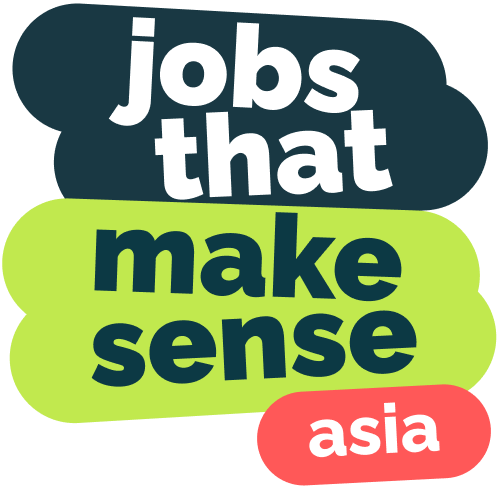MBTI - A tool for better understanding yourself in the workplace
Do you know the MBTI? This psychological assessment tool is often used to support career development, to get to know yourself better, identify your strengths, improve your communication with others... Although criticized, particularly by scientists, the tool has become fashionable in recent years. Why is it so popular? What are its uses? How can you use the MBTI method as an employee, HR manager or company director? Antoine, HR Director at makesense, regularly organizes workshops for companies, based on the different personality types proposed by the tool. He tells us how he uses the profiles in his work with companies.
The MBTI questionnaire
👉 Take the test here online and free of charge
⌛ Duration: 10-15 minutes
💡 Our advice: Answer spontaneously and authentically :)
The history of MBTI
Before that, we'll give you a quick rundown on the tool! MBTI stands for Myers & Briggs Type Indicator. It's a method invented by Isabel Myers Briggs and her mother Katherine Cook Briggs in the USA in the 1960s. They took their inspiration from the work of psychologist Jung, who published Psychological Types in 1921. He gives 4 psychological functions in human beings: sensation (S for Sensation), intuition (N for iNtuition), thinking (T for Thinking) and feeling (F for Feeling). According to him, each of us would have more or less developed faculties in these 4 major functions, going hand in hand with our Introverted (I) or Extraverted (E) nature.
To create the MBTI, they added another psychological function: organization. An organized and thoughtful person would then be Judgement (J) while a more flexible and adaptable person would be Perception (P) which defines the 16 personality types (ENFP, INTJ...)
The MBTI questionnaire, first published in 1962, has been regularly updated ever since;
3 things to remember about MBTI
- This is a 60-question psychological assessment tool
- It identifies 16 psychological personalities
- The results give a combination of 4 letters representing one of 16 profiles
Antoine, HR Director at makesense, organizes business workshops based on typical MBTI profiles. For him, it's an interesting support in the professional world. Here are the 3 ways he uses the tool.
MBTI, advice for companies
For the onboarding of a candidate
For Antoine, the MBTI can be useful as part of the onboarding process for a new candidate in a company, but never as part of recruitment "We choose a person for their skills or experience, and once the company has chosen, it can then look, via the tool, at how it will be able to make the most of these skills." A candidate's MBTI profile is interesting for understanding what a newcomer's potential needs are, their comfort zone(s), and how to conduct the collaboration in its early stages.
For conflict resolution
Very often, I use the MBTI reading grid to read a conflict between two people. Conflicts often arise when people are on opposite sides of the spectrum. For example, a J, who is highly organized and likes to plan ahead, working with a P, who has a more personal, last-minute organizational style, will find it hard to understand each other. An example comes to mind: "We were running an outdoor workshop, and one of my colleagues came to see me, worried, telling me there was a chance of rain in the morning. She asked me what we'd do if it rained. To which I replied that it had time to change and that we'd see what happened. She's J, I'm P." For Antoine, being trained in MBTI enables him to pick up on these behaviors and adapt his communication. "I understood that anticipating things could be important for her, even if it wasn't for me, so I made sure we met her need, looking for possible places where we could take shelter."
For corporate seminars
Antoine also uses the event for corporate seminars. He gives examples of interventions in which the MBTI has been useful. "I was running a workshop with a company team made up of 8 E's (rather extroverted personalities) and only 1 I (rather introverted). The 8 E's couldn't understand why the last one often ate lunch alone. Guilt and unspoken words set in. As the 8 E's liked to eat together and talk, they wondered what they could have done to make her not want to eat with them. Once they realized that their way of communicating was tiring for the introvert, it unblocked something." The 8 E's like to eat together and talk, so they wondered what they could have done to make her not want to eat with them.
Using the MBTI to recruit
When it comes to recruitment, Antoine is not a fan of the MBTI in this context. "We recruit for experience, expertise. We're not here to recruit people we're going to be friends with, but to recruit people who are going to do their job", he says. Indeed, putting people through the test can be tempting when recruiting a candidate, not least to understand possible matches between candidates' personalities and those of a team. For Antoine, however, as soon as you're recruiting for jobs that involve a certain degree of technicality, you need to focus on skills first. As for the prospect of using test results as a basis for recruiting complementary profiles into teams, again, this subject challenges Antoine: "why would you want to recruit people different from yourself? With the same MBTI profiles, you often go faster, with different profiles you go further." If he were to use it in the recruitment process, it would therefore be rather at its very end. He points out that the classic recruitment process begins with an administrative interview to check that there are no "no goes", then a business interview, and finally a culture fit interview. "If we were to integrate the MBTI, it would ultimately be as part of this last culture fit interview."
Does the MBTI put people in boxes?
"Sure, so what?" questions Antoine. "Very often, in fact, this is a criticism made by Fs, who are into emotion and empathy." He, during these workshops, makes it clear that he's not there to lock people into boxes, but to give keys. "You have to see the test response as a starting box in which you're in your comfort zone. The other 15 are zones of challenge, just as they can be zones of danger, worry or fatigue."
The limits of the MBTI tool
With MBTI questionnaires, the first limitation is the result. As the questions have been translated from English, they are open to interpretation. Respondents may misunderstand them, projecting themselves as they would like to be instead of as they are. A validated profile is only validated after an individual and group interview with a certified coach, and even then, it is sometimes difficult to have definitive certainties.
Once you take the test or give it to one of your employees, you'll have a typical profile of that person. "But be careful, what the tool gives you is to be taken with hindsight" stresses Antoine. He gives the example of ISTJs, profiles often equated with the accounting profession, rather introverted, rigorous, rational, and organized."My wife has this profile even though she's communications manager in an association." There's no link, so the MBTI remains a tool, giving results that aren't all to be taken at face value. What's more, when you retake the test, you may not get the same results from one time to the next, as we give different answers to the questions. Finally, the psychological profile traces a probability of behavior in a given situation. Depending on our emotions, our fatigue and the time we have available, we will respond differently to a situation. Profile is not personality!
Where can I find the MBTI questionnaire?
👉 Take the test here online and free of charge
⌛ Duration: 10-15 minutes
💡 Our advice: Answer spontaneously and authentically :)

